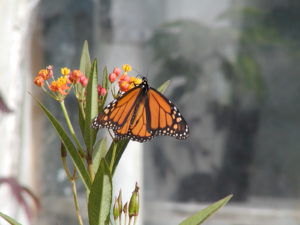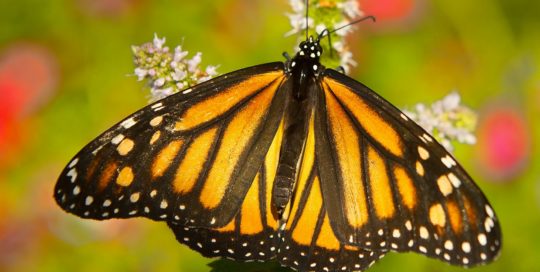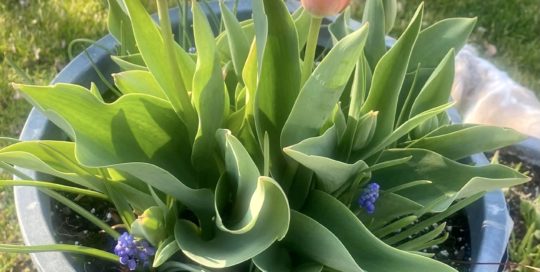Monarchs are the royalty of butterflies. Here in the Midwest, they can be a common sight in summer and fall as they travel through gardens, prairies, roadsides and natural areas. Their large, iridescent orange and black wings are hard to miss. Because of their size, the monarch (Danaus plexippus) is perhaps the most well-known butterfly in North America.
Monarch butterflies are renowned for their long-distance seasonal migration and spectacular winter gatherings in Mexico and California. However, their populations have either declined or greatly fluctuated in the past 20 years. A loss of habitat here and in Mexico and a loss of their host plants—members of the milkweed family—are considered two of the factors. As gardeners, there are many things we can do to help monarchs not only survive, but thrive. I like to start off with providing host plants for the caterpillars and nectar-filled flowers for the butterflies.

Doing the Math
In the 1990s, millions of monarchs made the epic flight each fall from the northern plains of the U.S. and Canada to central Mexico. Besides the largest populations in the group of “Eastern monarchs,” more than a million overwintered in forested groves on the California coast. The butterflies also exist west of the Rockies, through Central America into northern South America, in New Zealand and coastal Australia, some islands north of Australia and in a few parts of Europe where they may have been accidentally introduced.
The Xerces Society reports that researchers and scientists estimate that only a fraction of the monarch’s population remains from decades ago—a decline of approximately 70 percent has been noted in central Mexico and a decline of more than 95 percent in California. However, there was some good news earlier this year. The Western monarch population count showed a winter tally of more than 247,000 monarch butterflies that were observed across the West—an incredible increase from the previous year’s total of less than 2,000 and the highest total since 2016! That is something to celebrate.
Monarchs face other threats from the time the female lays an egg on a leaf to when the adult butterfly emerges from the chrysalis (pupa). The eggs and larvae face threats from other creatures (spiders, beetles and wasps). If there are too many monarch caterpillars on a milkweed plant, some of the larger caterpillars will eat the smaller ones. Let’s take a look at their lifecycle and how you can help them.










